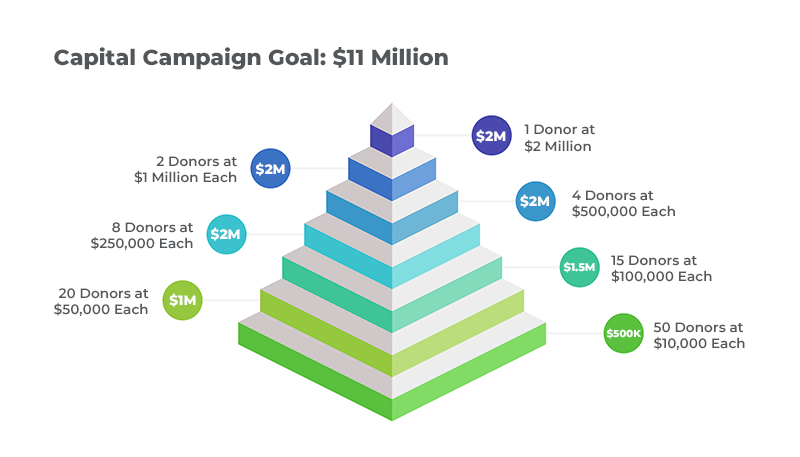Is a Capital Campaign Right for Your Nonprofit?
by Jim Vella
Capital campaigns give nonprofit organizations amazing potential to serve more people, expand their services and maximize their impact on communities.
At the same time, they’re long, arduous – and not for everyone. Successful campaigns typically run 3 to 5 years. They require a huge commitment from everyone connected to the organization: board members, leadership, staff, donors. Most important, they demand careful consideration before the planning phase ever begins.
If your organization is mulling the idea, it’s time for your team to have a frank discussion about capital campaign viability and readiness. The following questions will help get you started.
Assessing Capital Campaign Readiness
Why Are We Doing This?
A capital campaign should be used to fund a one-time extraordinary cost, not to grow the budget of your organization. With that in mind, think about the end result – a new or renovated facility, for example – and benefits it will generate. Will it meet a specific need in the communities you serve? Does it align with or expand your mission? How will it change the services you currently provide? When you clearly define your ‘why,’ you lay important groundwork for defining your campaign scope and building a strong case for support.
How Much Will It Cost?
To set a financial goal for your capital campaign, you must first devote time to securing preliminary estimates and costing out the project. Be sure to incorporate a reserve of 10% to 20%, especially for brick-and-mortar projects that may be impacted by rising construction costs over time.
Can We Realistically Raise the Amount We Need?
As a rule of thumb, a reasonable capital campaign financial goal should be no more than 8 to 10 times your annual operating budget. If your organization typically runs on $100,000 per year, for example, an $800,000 to $1 million campaign is feasible. But a $10 million campaign is unrealistic because your organization may not have the track record or the donor base to raise the 6- to 7-figure gifts needed to meet the goal. In this case, you either adjust your scope or take more time to research and pursue new major-donor relationships.
Do We Have a Strong List of Donor Prospects at Various Giving Levels?
In this pre-planning phase, it’s essential to review your current donor base and identify potential lead gifts, as well as prospects for other giving levels that will help you reach your goal.
A donor pyramid works well to chart these campaign needs. The top layers of the pyramid represent the lead gifts – the largest dollar amounts from the top 10 or so donors. As you move down the pyramid, the layers represent giving levels at decreasing amounts, as well as the number of donors required at each level to meet the overall goal. The more prospects you identify for each giving level, the better your chances for success. And solid lead gifts, which should get you to about 25% to 50% of your goal, will not only lend credibility to your campaign, but they’ll also help convince other major donors to follow suit.
As you work through this exercise, consider the duration of the campaign. Firm start and end dates help funders plan their support, especially those who may be more comfortable providing smaller installments over several years versus a larger lump sum.

Sample Donor Pyramid for $11 Million Capital Campaign
What’s Our Plan to Reach New Donors?
In most cases, existing donors provide lead gifts and most of the funding for your campaign. New donors, however, can often be the key to the campaign’s ultimate success. To reach this audience, it’s important to develop a long-term donor engagement plan that incorporates research on potential new funders, including those connected to existing donors and foundations that have funded similar projects in the past.
Is Our Board on Board?
A capital campaign has little chance for success without unanimous support from your governing board. It’s important to be proactive, reaching out to every board member (individually and as a group) to present your case, answer questions, solve issues and ultimately, achieve buy in before you start the formal planning phase.
Do We Have the People Resources Needed to Get the Job Done?
It bears repeating – capital campaigns are long and labor intensive. Do you have the staff and required skillsets to take on a major fundraising endeavor in addition to your ongoing fundraising efforts? Do you have the funding to outsource some aspects of campaign support?
Next Steps
These exploratory discussions will give your nonprofit a good sense for capital campaign readiness. At the same time, they may prompt the need for a more formal capital campaign feasibility study. In this case, formal interviews and analyses help determine internal preparedness and test your case for support among potential donors and other key stakeholders. No matter what direction you take, a pre-planning assessment is essential to set the best course of action for your organization.


